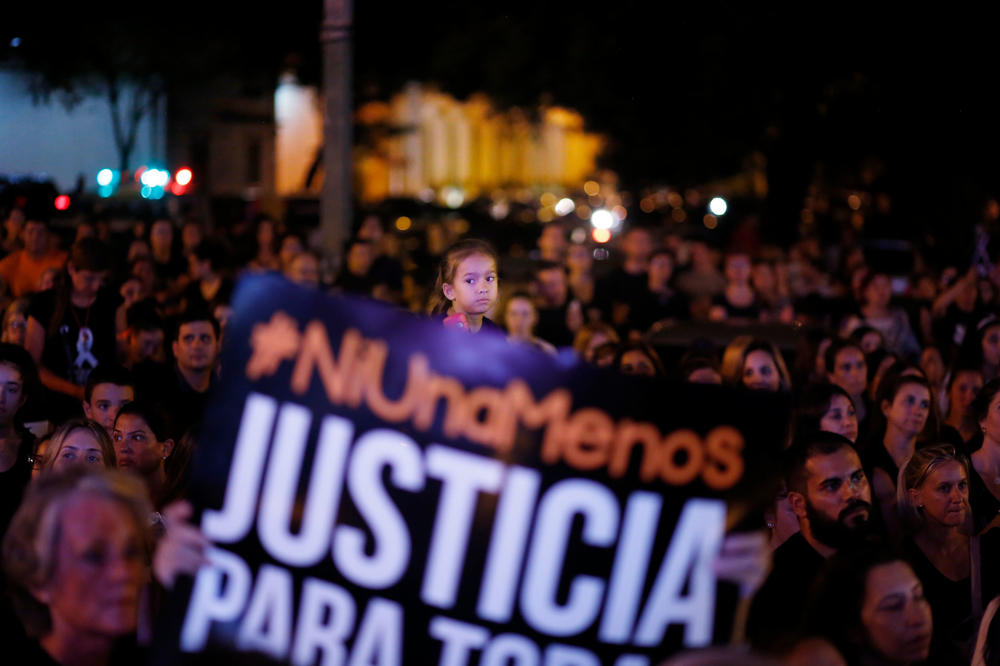No More Victims
Database project documenting the murder of women and girls selected for the Margherita von Brentano Prize from Freie Universität Berlin
Nov 04, 2021
Fighting for their rights: People taking to the streets in Asunción, Paraguay, to protest gender-based violence against women in December 2017.
Image Credit: picture alliance
“¡Ni una menos, ni una más!” (“Not one [woman] less, not one [murder] more!”) – This is the clarion call made by women in Latin America, who regularly take to the streets in protest, fueled by the fear of being killed because of their gender and by anger that perpetrators are rarely investigated and punished. In several Latin American countries, the numbers of murdered women are particularly high. In Mexico, for instance, ten women are murdered every day. To be sure, the gender-related murder of women and girls is a global tragedy.
Organizing Crime Data to Reveal Power Relations
“These crimes, known as ‘femicide’ or ‘feminicide,’ originate in hierarchical power relations, whereby the victims are assigned a subordinate position,” explains Hannah Beeck, who studied Interdisciplinary Latin American Studies at Freie Universität and is a member of the “Feminizidmap” initiative. The project has been documenting gender-related killings of women and girls in Germany since 2019. The project group was selected for this year’s Margherita von Brentano Prize from Freie Universität, which will be awarded on November 16, 2021.
The initiative’s thirteen female members collect information from media reports in order to organize the crime data systematically. They aim to gather as much data as possible to show that acts of femicide and feminicide can occur in different contexts. “In Germany, these crimes are usually equated with murders committed within a relationship. But it’s not always the case that the victim of feminicide is in an intimate relationship with the perpetrator,” says Aleida Luján Pinelo, cofounder of the database project. The motives for such crimes vary greatly. Some perpetrators may feel humiliated by a woman, while others are motivated by racism.
Still No Uniform Definition
According to Pinelo, the terms “femicide” and “feminicide” have not yet taken root in Germany, which may be due to the lack of a uniform definition. As a result, politicians and lawyers often avoid using the terms. Indeed, language influences how people refer to the murder of women and girls. While “femicide” is frequently used in German and English, Romance languages, such as Spanish and Italian, use “feminicide.” “The Mexican researcher Marcela Lagarde introduced the term ‘feminicidio,’ which translates as “feminicide,” says Pinelo, who also uses this term. “It emphasizes the obligation of state and societal actors to protect women and girls against gender-related murder,” explains the doctoral student of law at the University of Turku.
The gender-related murder of women and girls has long been viewed as a phenomenon that does not occur in Germany, says Pinelo. Beeck believes that this is related to German society’s self-image. “Many people think that Germany is quite advanced when it comes to equality and that crimes like feminicide don’t happen here. After all, we’ve had a female chancellor for many years.”
Things Will Only Change When the Problem Is Acknowledged
The team behind the “Feminizidmap” initiative has noticed, however, that public scrutiny of femicide and feminicide has increased. Germany’s Federal Criminal Police Office (Bundeskriminalamt) has published statistics on domestic violence since 2015, which has brought greater attention to gender-related differences. According to their 2019 report, 80 percent of victims are female. “These figures attest to structural problems within society,” says Pinelo. There are not enough safe spaces, such as women’s shelters, or educational opportunities about role models, particularly for boys and men, or the concerns of people who are intersex, transgender, or nonbinary. Both Pinelo and Beeck believe that responsibility for this issue lies primarily with politicians.
“The state must acknowledge the murder of women and girls as a problem in Germany. We can only fight what we can name,” they say. The project’s participants hope that government institutions will analyze gender-related violence in the future. They would like their data to be used to help establish measures that prevent women and girls from ever falling victim to femicide or feminicide.
This text originally appeared in German on October 2, 2021, in the Tagesspiegel newspaper supplement published by Freie Universität Berlin.

